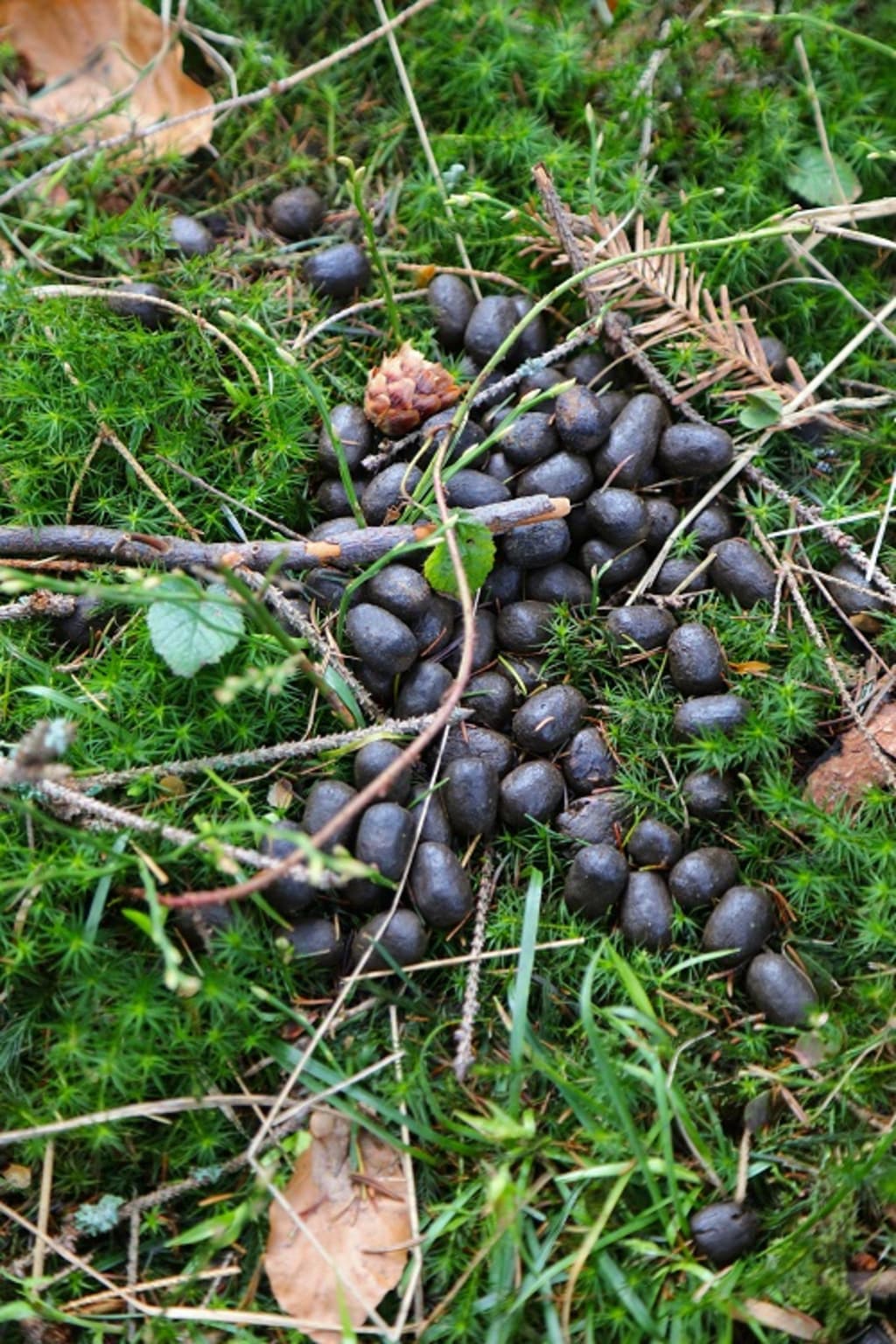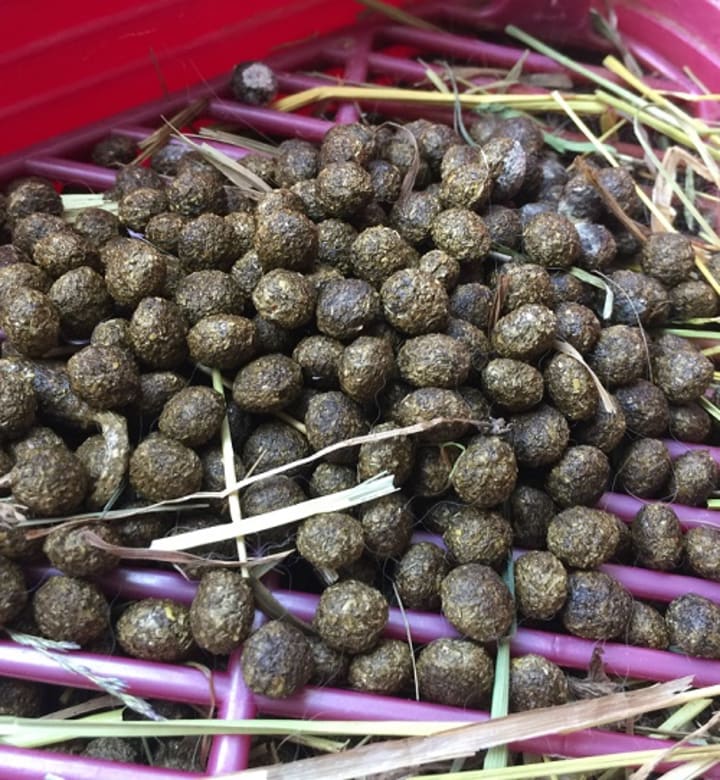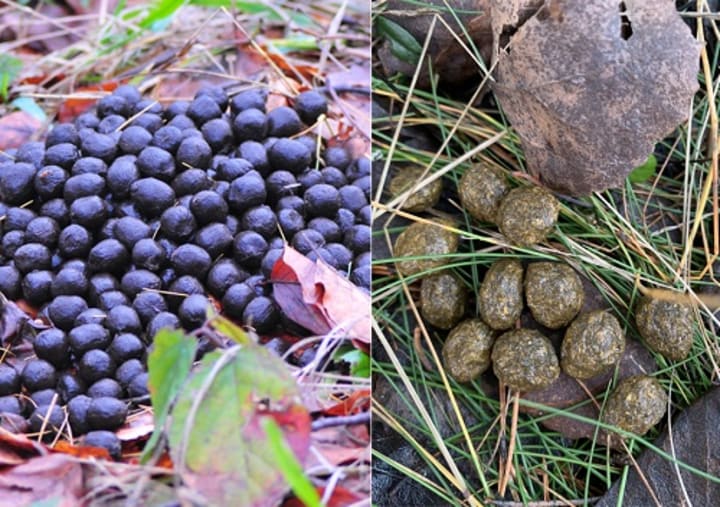Deer Poop vs Rabbit Poop: All the Differences!
“Deer Poop vs Rabbit Poop”

If you're a gardener or wildlife observer, you've likely encountered deer and rabbit droppings. But have you ever stopped to consider the differences between them? This in-depth look at "Deer Poop vs Rabbit Poop" sheds light on this often-overlooked topic.
Deer Poop: Description
Deer poop, also known as deer scat or feces, is the waste material produced by deer, which is an essential aspect of their ecological role and behavior. It consists of undigested food particles, plant matter, and waste products eliminated from their digestive system.
Deer poop varies in appearance depending on their diet and the time of year. In general, it's cylindrical in shape, segmented, and dark brown to black in color. The size can range from small pellets to larger clumps, reflecting the age and size of the deer.
Deer feces play a significant role in the ecosystem. They help in nutrient cycling and soil enrichment as their droppings contain organic matter and nutrients. This can improve soil fertility and benefit plant growth. Additionally, the presence of deer scat can attract other wildlife species that feed on it or use it as a scent marker.
Tracking deer scat is also a valuable tool for hunters and wildlife enthusiasts. It can provide insights into deer movement patterns, their diet, and even their health. Understanding deer poop can be essential for managing deer populations and conserving their habitat.
In summary, deer poop is not just waste; it's a crucial component of the natural world, contributing to ecosystem health, nutrient cycling, and our understanding of these majestic animals.
Rabbit Poop: Description
Rabbit poop, also known as rabbit droppings or feces, is the waste material produced by rabbits, and it serves various ecological and practical functions.
Rabbit feces are typically small, round pellets that vary in color depending on the rabbit's diet. They are usually brown or greenish-brown and can be quite uniform in size and shape. Unlike some other animals, rabbits produce two types of feces: hard, dry pellets and softer, cecotropes. Cecotropes are usually consumed by rabbits directly from their anus as they contain valuable nutrients and vitamins that are vital for their health.
From an ecological perspective, rabbit poop plays a role in nutrient cycling and soil enrichment. When rabbits defecate, they introduce organic matter and nutrients into the environment, contributing to soil fertility and benefiting plant growth in the areas where they forage.
Rabbit droppings can also be of interest to gardeners and farmers. They can collect and use rabbit manure as a natural fertilizer due to its high nutrient content.
In summary, rabbit poop is not just waste; it's a part of the natural ecosystem and can have practical applications in agriculture. Understanding the characteristics and importance of rabbit feces can help us appreciate the role of these small mammals in their environment.

Deer Poop vs. Rabbit Poop: Key Differences
Deer poop and rabbit poop have several key differences in terms of their appearance, composition, and ecological significance:
1. Size and Shape:
Deer Poop: Deer feces are typically larger in size compared to rabbit droppings. They often resemble oval-shaped pellets or clusters of pellets. The size can vary depending on the deer's age and diet, but they are generally larger than rabbit droppings.
Rabbit Poop: Rabbit feces are small, round pellets. They are uniform in size and shape and are significantly smaller than deer droppings.
2. Color:
Deer Poop: Deer scat is usually dark brown to black in color, although the exact shade can vary based on their diet.
Rabbit Poop: Rabbit droppings are typically brown or greenish-brown, depending on the rabbit's diet. They tend to be lighter in color compared to deer poop.
3. Composition:
Deer Poop: Deer feces consist of undigested food particles, plant matter, and waste products from the deer's digestive system. They may contain larger plant fragments and are less uniform in composition.
Rabbit Poop: Rabbit droppings are more uniform and consist of small, dry pellets. They also produce softer, cecotropes, which are consumed by rabbits to extract additional nutrients.
4. Ecological Significance:
Deer Poop: Deer scat contributes to nutrient cycling in the ecosystem and can enrich soil fertility. It can attract other wildlife species that feed on it or use it as a scent marker. Understanding deer scat can be valuable for wildlife management and research.
Rabbit Poop: Rabbit droppings also play a role in nutrient cycling and soil enrichment but on a smaller scale. Rabbit manure is often collected and used as a natural fertilizer by gardeners and farmers due to its nutrient-rich content.
In summary, the key differences between deer poop and rabbit poop lie in their size, shape, color, composition, and ecological roles. Both types of feces contribute to the ecosystem in terms of nutrient cycling, but they have distinct characteristics that make them recognizable and useful in different contexts.

Here You can Read Complete Article On Deer Poop vs Rabbit Poop: All the Differences!





Comments
There are no comments for this story
Be the first to respond and start the conversation.